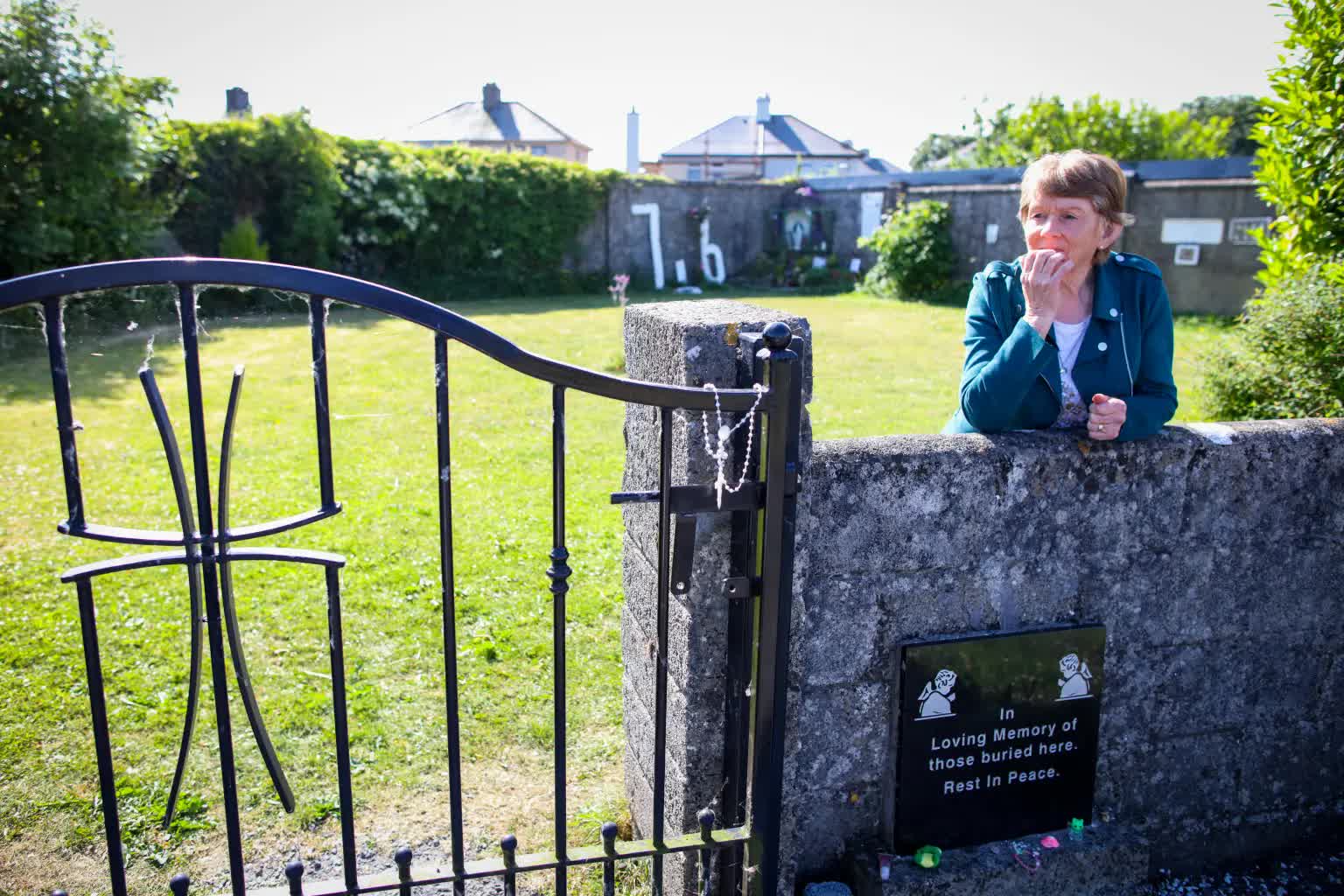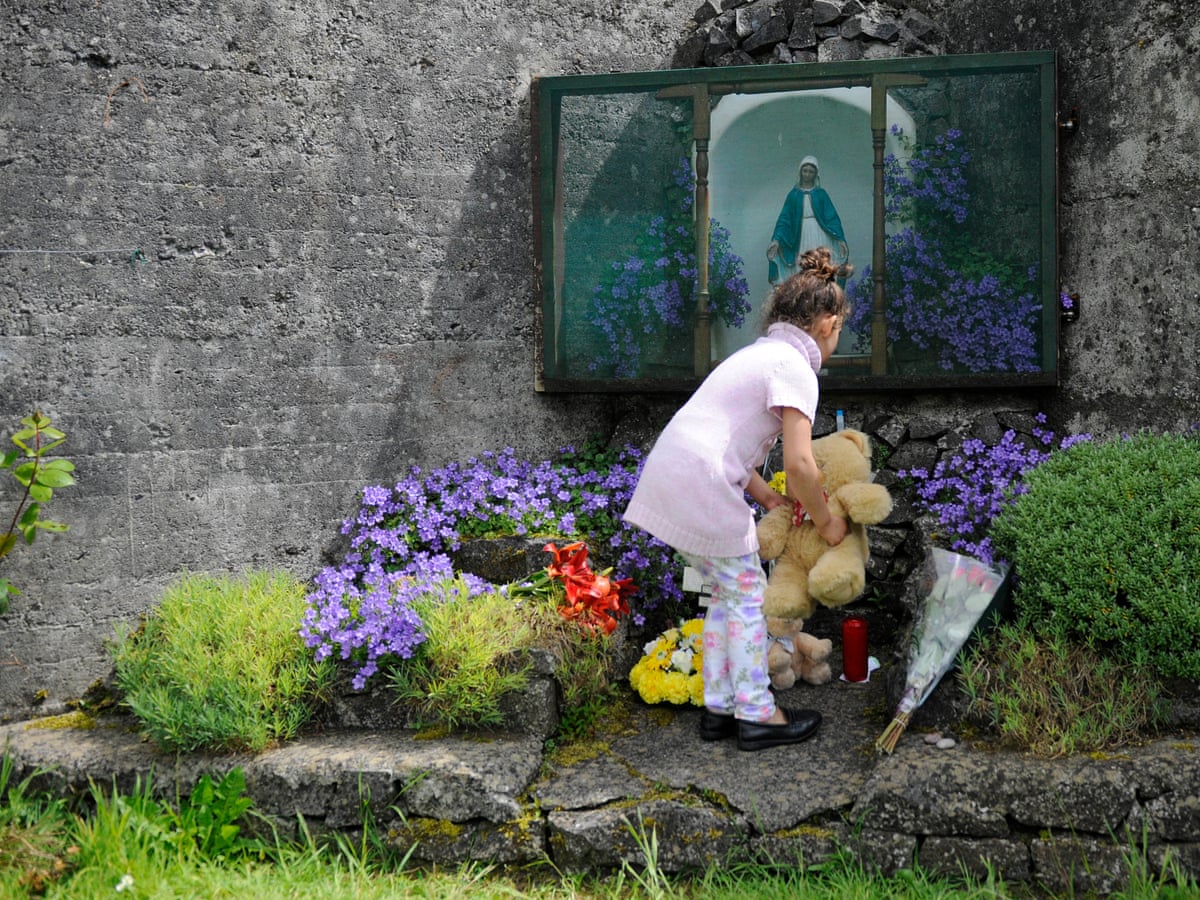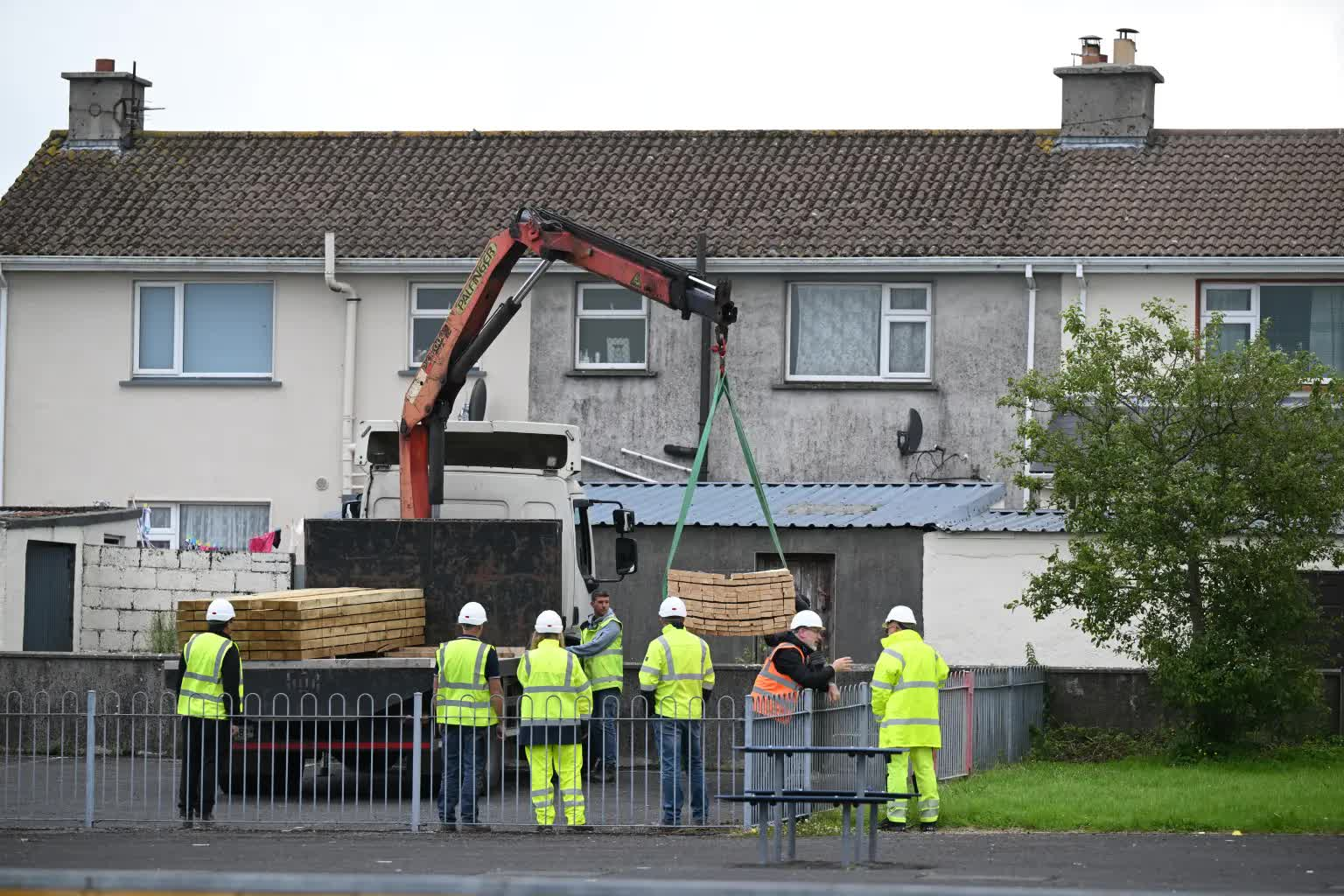
The earth beneath the former Bon Secours Mother and Baby Home in Tuam, County Galway, is finally giving up its secrets—secrets long buried in silence, cement, and shame. With the recent commencement of excavation at the site, Irish authorities have begun the long-overdue forensic investigation into what may be one of the most disturbing tragedies in the nation’s modern history: the concealed deaths of nearly 800 infants and young children.
These remains, most of which are believed to be interred in an old septic tank—once dubbed “the pit” by locals—have haunted the national conscience since the scale of the tragedy came to light in 2014.
Between 1925 and 1961, 798 children died at the Bon Secours home, a Catholic-run institution for unwed mothers. According to local historian Catherine Corless, who spent years combing through death certificates, birth records, and property files, only two of these children were given proper burials in the nearby cemetery.

The rest—796 souls—were unaccounted for. Corless’ painstaking work revealed what the Irish state, church, and community had long suspected but never confronted: the children’s bodies had been discarded in a septic system behind the home. The building itself was demolished in 1971, and the site has since been built over with modern apartments. But beneath the concrete, sorrow remains trapped in the soil.
Bon Secours, known locally as “The Home,” served as both a maternity facility and de facto detention center for unmarried pregnant women. These women, considered by society and the Church to be morally compromised, were often sent to Tuam by families desperate to conceal their disgrace. Once admitted, they gave birth and were required to remain for up to a year, performing unpaid labor under the eyes of the nuns who ran the institution.
The newborns were taken from them—often forcibly—and raised by the nuns until they were adopted out, sometimes without consent, often with little to no information provided to the birth mothers.
It wasn’t until 2014, through Corless’ documentation and public outcry, that the true scale of the horror began to emerge. Since then, the Irish government has been under pressure from both domestic and international audiences to investigate the matter and provide closure for survivors.

Now, after more than a decade of advocacy, excavation teams are on site, initiating a process that is expected to take at least two years. The remains, likely little more than fragments of cartilage and bone, will be identified where possible and reburied with the dignity they were long denied.
For the families of the deceased, like Annette McKay, the excavation is both a relief and a renewed agony. Her sister, Mary Margaret, was born in the home after their mother, Margaret “Maggie” O’Connor, was raped at 17. The baby died six months later.
Maggie only learned of her daughter’s death when a nun coldly informed her while she was hanging out laundry. “The child of your sin is dead,” the nun whispered behind her. Annette, who now resides in the UK, carries the weight of that cruelty like an open wound. “I don’t care if it’s a thimbleful,” she told Sky News, speaking of the remains. “I just want her to be found.”
The tragedy of Tuam is not an isolated incident but part of a larger network of systemic abuse in Ireland, spanning decades and involving thousands of women and children. The Bon Secours home was one of many institutions that operated under the combined authority of religious orders and state indifference.

Women who bore more than one child out of wedlock were often transferred to Magdalene laundries, facilities established to punish and isolate “fallen women.” The term initially referred to sex workers but was later applied broadly—too broadly—to any woman who transgressed societal expectations, including victims of rape and incest, orphans, and girls simply deemed troublesome by their families.
These institutions functioned in silence, shrouded by brick walls and the complicity of local authorities. The last of the Magdalene laundries only shut down in the 1990s, a chilling reminder that the abuse extended well into modern times. In 2014, the Irish government issued a formal apology, acknowledging the pain inflicted by these institutions and the systems that enabled them.
By 2022, a financial redress scheme was established, compensating 814 survivors with approximately $32.7 million. Yet, the religious orders responsible for operating the homes and laundries have largely refused to contribute to this restitution effort, despite appeals from Ireland’s Justice Minister and public pressure.
As excavation progresses at the Tuam site, the effort is not merely about uncovering bones—it’s about unearthing truth. Each small piece of a child’s skeleton is a fragment of a forgotten life, a silent testament to a society that once deemed them disposable.
The children died of a variety of causes—malnutrition, neglect, untreated illness—all compounded by institutional indifference. Yet for decades, their deaths were rendered invisible, their bodies entombed in waste, their names lost in archives.

Now, as teams of forensic experts sift through the soil, they are doing more than piecing together human remains. They are reconstructing a narrative of loss, injustice, and finally, recognition.
Survivors, relatives, and advocates hope that this painful process will lead to justice—not only through reburial and compensation but through cultural reckoning. That the story of Tuam will serve as a mirror for the Irish nation to confront its past, not sanitize it.
The implications ripple outward. The Bon Secours investigation casts a long shadow over all similar institutions across Ireland, and even across other countries where religious-run homes operated under similar ideologies. How many more septic tanks lie undisturbed beneath former convents?
How many more records are tucked away in archives, deliberately left unexamined? How many more survivors are still waiting for an acknowledgment that what happened to them—and to their mothers and siblings—was wrong?
For the people of Tuam, the excavation is reopening an old wound. But it also represents the first real step toward healing. The dead are finally being remembered. Their families are finally being heard. And the dark silence that hung over the town for decades is finally being broken.
In the end, what remains is not just a burial site—it’s a testament to endurance. Against all odds, against decades of erasure and denial, the truth found a way to surface. And now, the children of Tuam may finally be laid to rest, not in a septic tank, but in the hearts and history of a nation that must never forget them.
-1749482120-q80.webp)
-1749481098-q80.webp)
